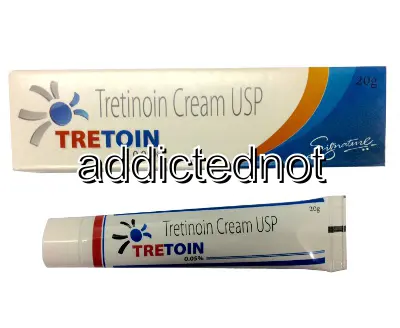Buy Tretinoin Online in the USA
| Package | Dosage | Price | Price per Dose | |
|---|---|---|---|---|
| Dosage: 0.1% | ||||
| 5 tube | 0.1% | $169.08 | $33.82 | |
| 4 tube | 0.1% | $148.79 | $37.20 | |
| 3 tube | 0.1% | $131.88 | $43.97 | |
| 2 tube | 0.1% | $98.06 | $49.04 | |
| 1 tube | 0.1% | $59.17 | $59.17 | |

Tretinoin Description
Overview of Tretinoin
Tretinoin, also known as all-trans retinoic acid, is a derivative of vitamin A that is widely used in dermatology. It is primarily prescribed for the treatment of various skin conditions, especially acne and photoaging signs. This medication works by promoting the rapid turnover of skin cells, which helps prevent the formation of acne lesions and improves skin texture and tone over time.
Dermatological Uses and Effectiveness
Tretinoin is most commonly recommended for treating acne vulgaris. It effectively reduces the number of pimples and prevents future outbreaks. The medication helps unclog pores and encourages the shedding of dead skin cells that often cause blockages. Many users notice improvements in skin smoothness and clarity within a few weeks of regular use.
In addition to acne, tretinoin is also used for reducing signs of skin aging such as fine lines, wrinkles, and hyperpigmentation. It stimulates collagen production, which enhances skin firmness and elasticity. Patients often see gradual improvements with consistent application over several months.
Application Guidelines and Usage
Tretinoin is typically available in topical formulations such as creams, gels, or solutions. The application is usually once daily at night, as exposure to sunlight can increase the risk of skin irritation. It is important to start with a lower concentration to minimize side effects, gradually increasing as tolerated.
Prior to applying tretinoin, the skin should be thoroughly cleansed and dried. A thin layer should be spread evenly over the affected areas without rubbing vigorously. Sunscreen use during the day is strongly recommended to protect sensitive skin. Patients should avoid using harsh scrubs or other irritating products alongside tretinoin unless advised by a healthcare provider.
Potential Side Effects and Precautions
While tretinoin is effective, it can cause side effects, especially during the initial weeks of use. Common adverse reactions include dryness, redness, peeling, and irritation of the skin. These symptoms tend to diminish over time, but using moisturizers can help alleviate discomfort.
More serious reactions are rare but can include severe redness, blistering, or allergic responses. It is crucial to follow prescribed directions and consult a healthcare professional if significant irritation occurs. Pregnant women or those planning pregnancy should avoid tretinoin unless specifically advised by their doctor, as it may pose risks to fetal development.
Storage and Handling
Store tretinoin in a cool, dry place away from direct sunlight. Keep the medication out of reach of children to prevent accidental ingestion. Proper storage ensures the medication maintains its potency and reduces the risk of misuse.
See Also


